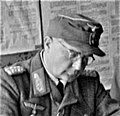| Governor of the Italian Islands of the Aegean | |
|---|---|
| Governatore della Isole italiane dell'Egeo | |
 Coat of arms of the Italian Islands of the Aegean | |
| Reports to | King of Italy |
| Residence | Governor's Palace , Rhodes |
| Formation | 5 May 1912 |
| First holder | Giovanni Ameglio |
| Final holder | Otto Wagener |
| Abolished | 8 May 1945 |
| Succession | British military administrators in the Aegean |


This article lists the governors of the Italian Islands of the Aegean , from 1912 to 1945. It includes Italian commanders and governors, as well as German commanders of the Dodecanese during World War II.
Contents
Italy conquered the Dodecanese from the Ottoman Empire in 1912, during the Italo-Turkish War and ceded the islands to Greece in 1947, according to the Treaty of Paris.









